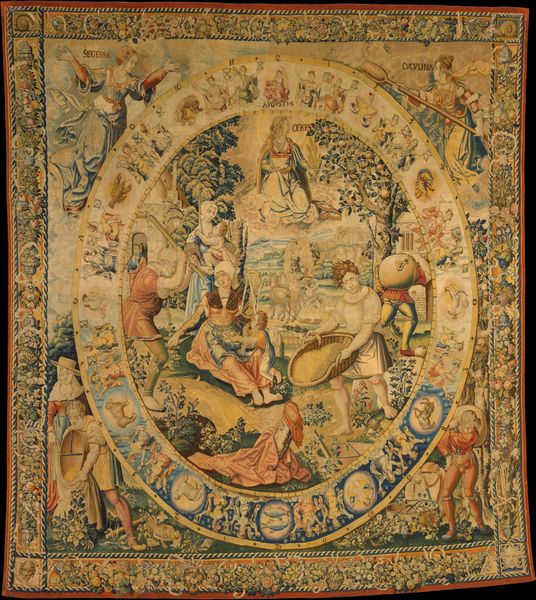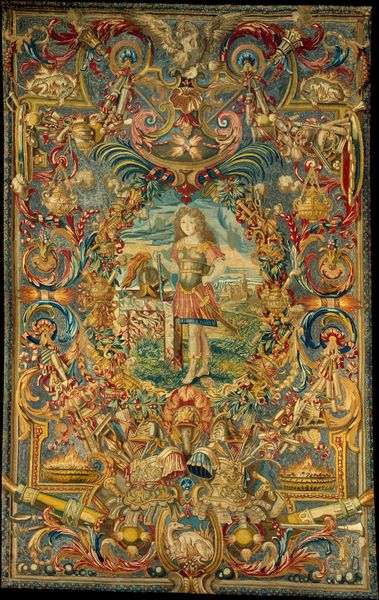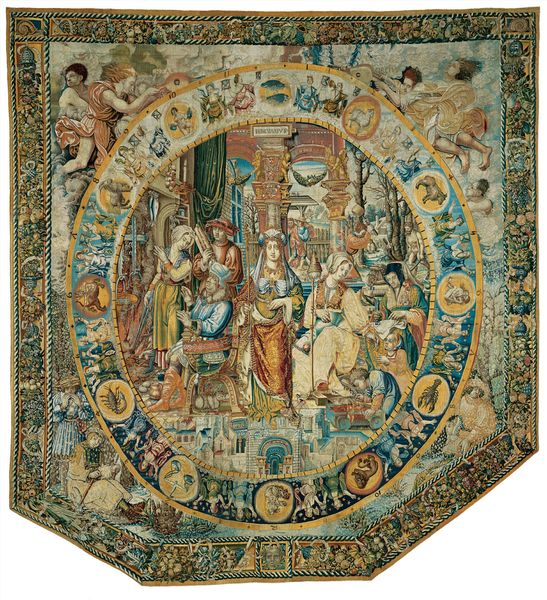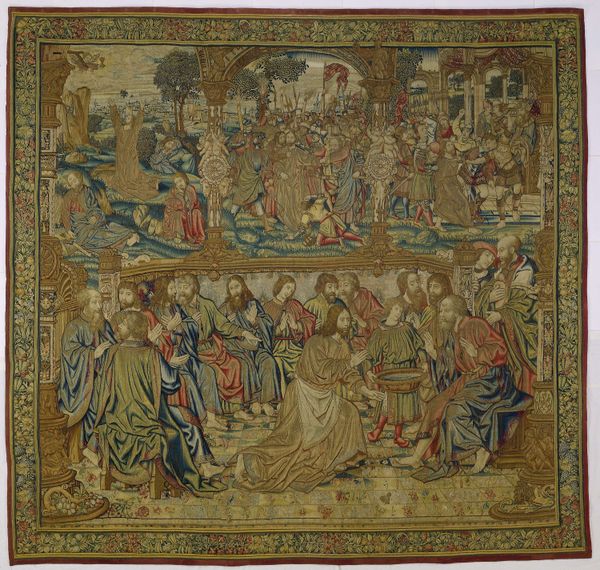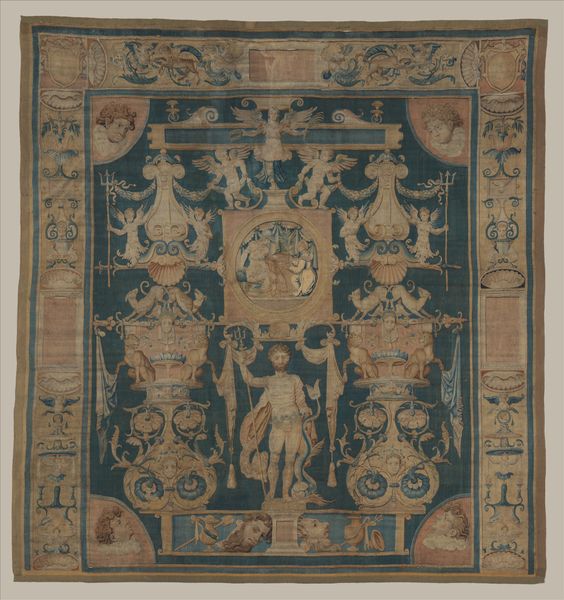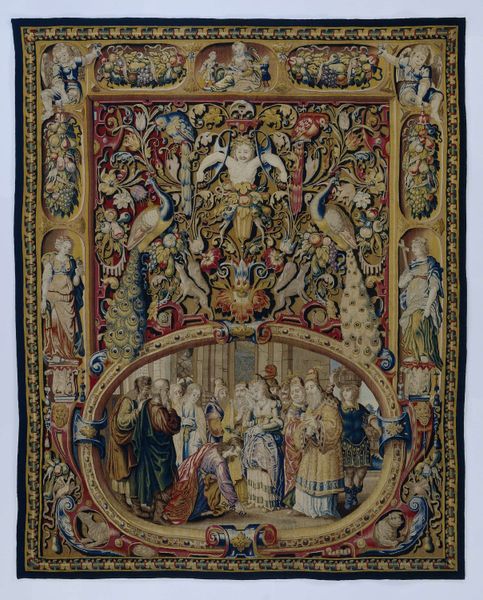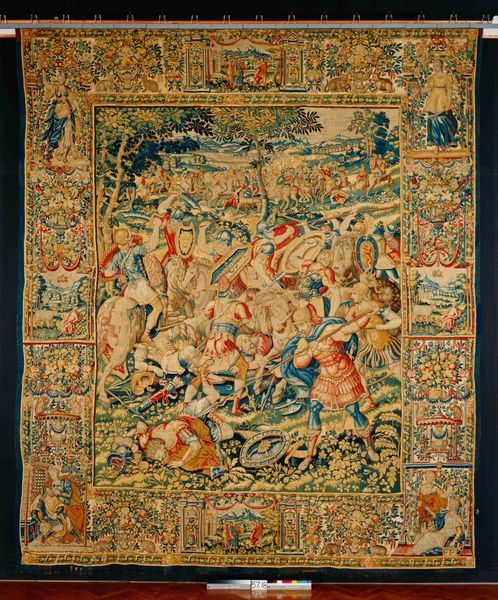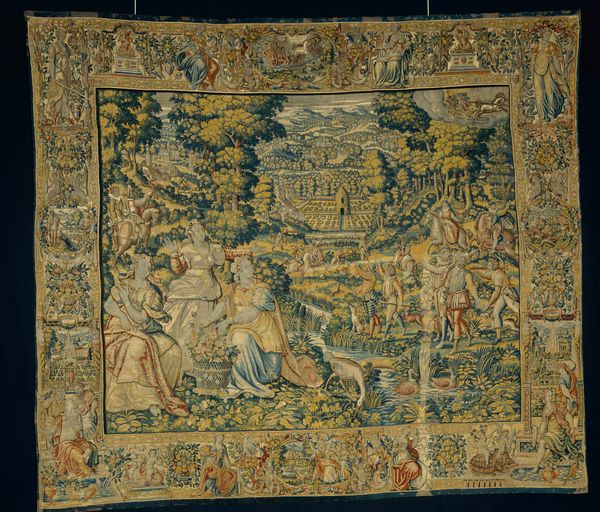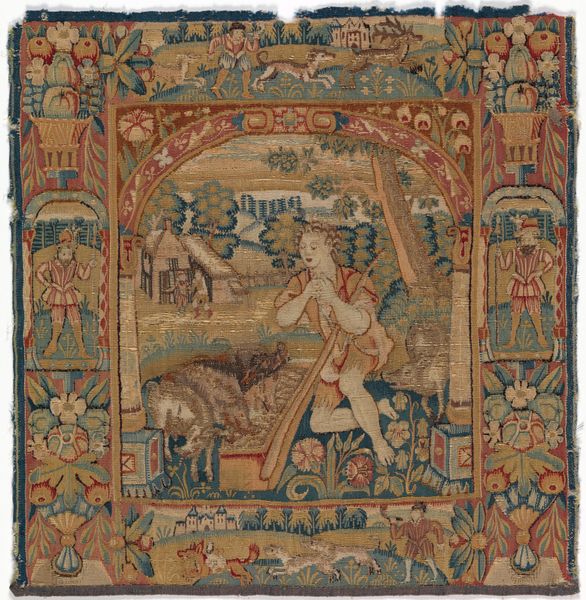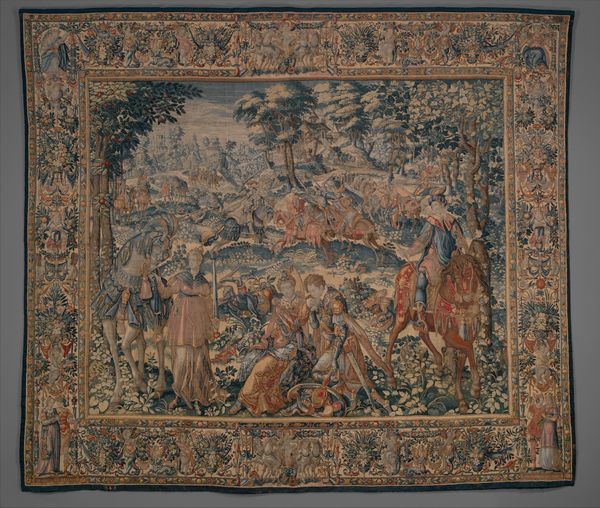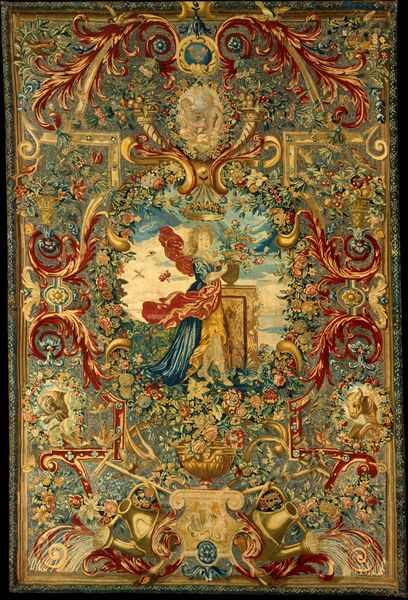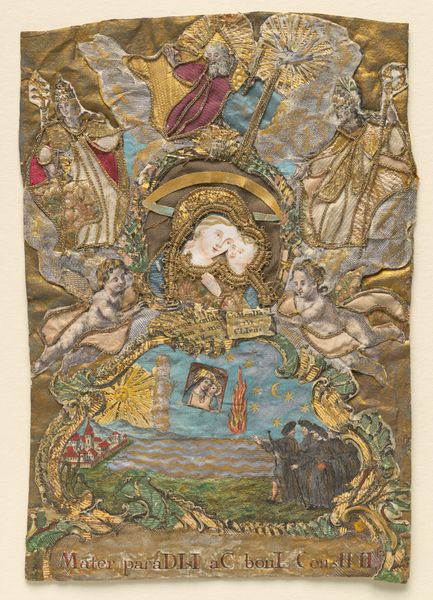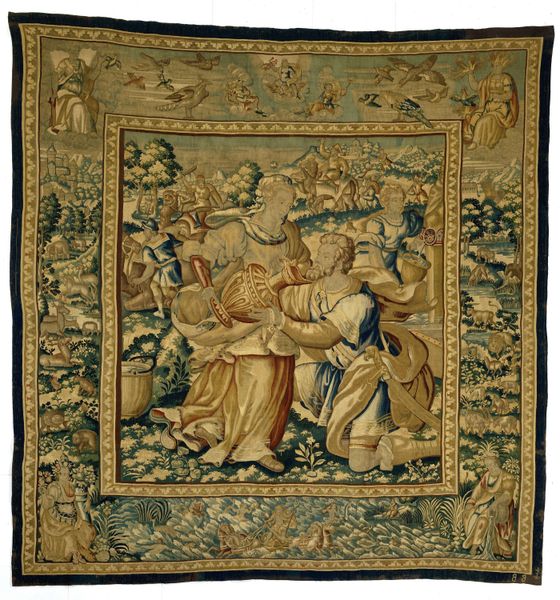
weaving, textile
#
narrative-art
#
weaving
#
landscape
#
textile
#
figuration
#
11_renaissance
#
northern-renaissance
#
decorative-art
Dimensions: 15 ft. 3 in. × 12 ft. 7 in. (464.8 × 383.5 cm)
Copyright: Public Domain
Editor: This is "October from a set of Medallion Months," a tapestry created by Bernard van Orley between 1520 and 1533. It's incredibly detailed, and I'm immediately drawn to how it depicts the labors associated with the fall harvest. How do you interpret this work? Curator: It's fascinating to consider this tapestry as a visual document of its time, isn't it? How the representation of labor, class, and even the calendar itself is interwoven. Who do you think this piece speaks for, and who might be missing from the narrative it presents? Editor: Well, we see the workers clearly depicted, bringing in the harvest. But the presence of Jupiter suggests a connection to the ruling class. Is it portraying a harmonious relationship, or perhaps something more complex? Curator: Exactly! Think about the socio-political climate of the time. The relationship between those who own the land and those who work it was deeply fraught. Consider the absence of the voices and experiences of the working class themselves. Does this idealized vision potentially erase the struggles and realities of their daily lives? Editor: That’s a powerful point. I hadn’t considered the act of framing labor in such a decorative and seemingly celebratory way as potentially masking a more difficult reality. It makes me question whose story is truly being told. Curator: It also begs us to question, what function did art play in upholding power structures? Recognizing these nuances helps us see beyond the surface beauty. It becomes a tool for understanding the historical power dynamics at play. Editor: It definitely changes how I see the tapestry. It is not just a depiction of a month, but also a statement about class, power, and perhaps even erasure. Curator: Precisely. It's in questioning the seemingly straightforward narratives that we discover the most profound insights about our shared past and its influence on the present.
Comments
No comments
Be the first to comment and join the conversation on the ultimate creative platform.
